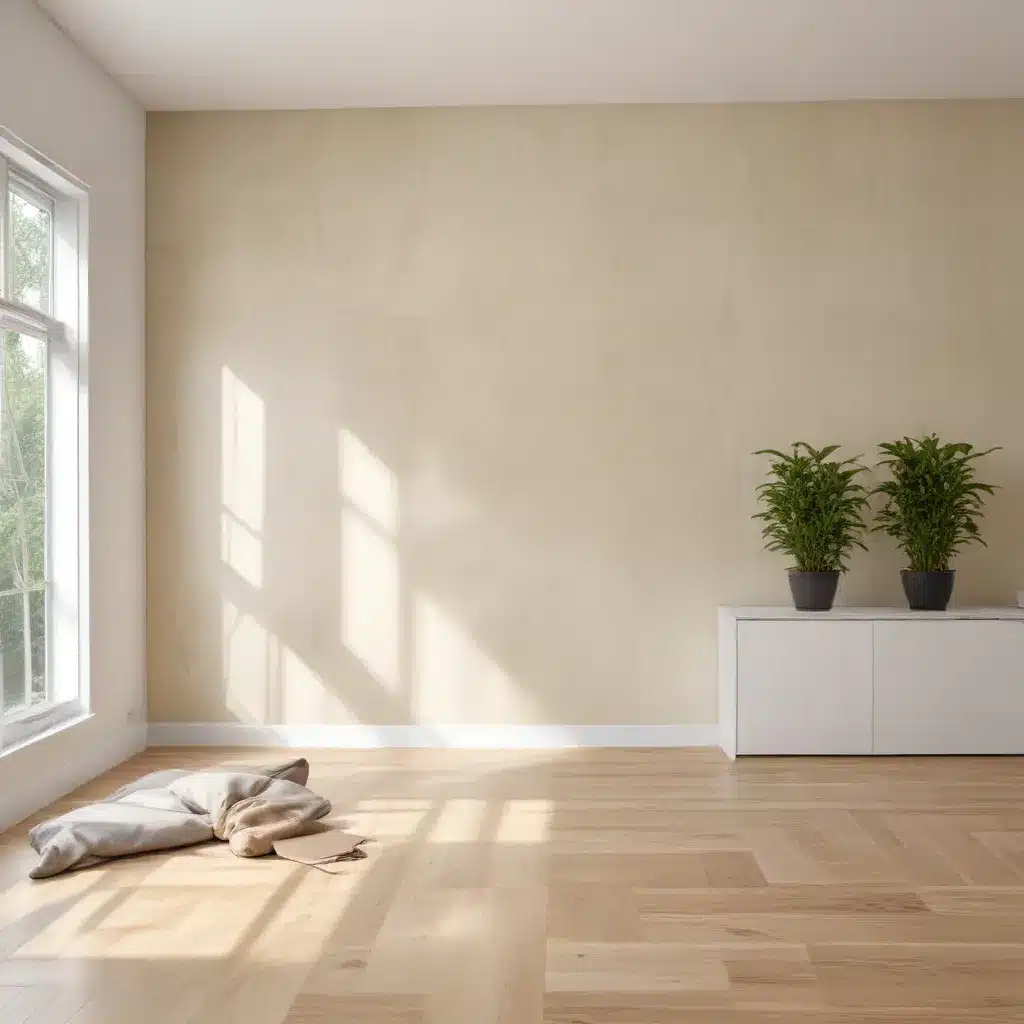
As an experienced home improvement consultant, I’m excited to share practical strategies for transforming your living space into a eco-friendly haven. Whether you’re tackling a full-scale renovation or aiming for simple upgrades, there are numerous ways to enhance your home’s sustainability and reduce your carbon footprint.
Sustainable Materials
When it comes to renovation materials, the key is to prioritize renewable, recycled, and reclaimed resources. Look for options like bamboo, cork, or reclaimed wood that minimize the environmental impact of new resource extraction.
For insulation, consider recycled cotton or cellulose products, which can be up to 80% recycled. Brands like CertainTeed utilize recycled glass to meet EPA guidelines and divert materials from landfills. When selecting paints, opt for low or no-VOC (volatile organic compounds) formulas that promote indoor air quality.
Thoughtful material choices extend to home finishes as well. Seek out natural fiber textiles like hemp or linen for curtains, upholstery, and linens. Innovative eco-friendly materials, such as mycelium-based lamps, are also gaining popularity for their renewable properties.
Green Energy Solutions
One of the most impactful sustainable renovations is the integration of renewable energy systems. Solar panel installations, which can now qualify for up to a 26% federal tax credit, are a game-changer for reducing utility costs and emissions. These versatile systems can power your home, heat your water, and even charge batteries.
For heating and cooling, geothermal heat pumps offer an efficient, eco-friendly alternative to traditional HVAC systems. By harnessing the stable temperatures underground, these systems use far less energy to regulate indoor climate. Wind turbines are another renewable option worth exploring, especially in areas with reliable airflow.
Water Conservation Strategies
Water conservation is a crucial aspect of sustainable home design. Low-flow fixtures, such as faucets, showerheads, and toilets, can reduce water consumption by 25-60% without compromising performance. Consider installing dual-flush toilets to further optimize your water usage.
Beyond plumbing, greywater systems that recycle household wastewater for irrigation and rainwater harvesting setups can significantly decrease your reliance on municipal water supplies. These strategies not only conserve resources but also reduce the strain on local water infrastructure.
Waste Reduction Measures
Minimizing construction and household waste is a crucial aspect of eco-friendly renovations. Work with your contractor to implement comprehensive waste management practices, including sorting, donating, and recycling materials whenever possible. Avoid the temptation of a full demolition in favor of a more measured deconstruction approach that preserves reusable elements.
At the household level, incorporate composting and recycling systems to divert organic and inorganic waste from landfills. Donate or resell gently used items that no longer serve your needs, giving them a second life.
Passive Design Principles
Harnessing the power of passive design can significantly enhance your home’s energy efficiency and comfort. Consider the orientation and placement of your home, ensuring that primary living spaces face the appropriate direction to maximize natural light and solar heat gain during the winter, while providing shading in the summer.
Strategically placed windows and skylights can optimize daylighting, reducing the need for artificial lighting. Couple these with high-performance, low-E windows that minimize heat transfer, and you’ve got a winning combination for regulating indoor temperatures.
Thoughtful landscaping choices, such as planting deciduous trees on the south and west sides, can provide natural shading and insulation throughout the seasons. Green roofs are another option that can help moderate indoor temperatures, purify the air, and boost biodiversity.
Healthy Indoor Environment
Sustainable renovations should also prioritize the health and well-being of your home’s occupants. Prioritize non-toxic finishes and materials free of harmful volatile organic compounds (VOCs) to improve indoor air quality and reduce the risk of respiratory issues or allergies.
Proper ventilation and humidity control are equally important, as they help regulate temperature, minimize moisture buildup, and prevent the growth of mold or mildew. Biophilic design elements, such as incorporating houseplants or creating living walls, can further enhance the connection between the indoor and natural environments, positively impacting occupant health and productivity.
Budgeting and Timeline Considerations
Eco-friendly renovations may require a slightly higher upfront investment compared to traditional methods, but the long-term savings and environmental benefits make them a wise choice. According to industry estimates, energy-efficient upgrades like high-performance windows ($100-$300 per window), insulation ($1,000-$3,000 per 1,000 square feet), and smart thermostats ($100-$300) can significantly reduce utility bills, often by as much as 30%.
While the costs for solar panel installations ($10,000-$30,000) may seem daunting, the generous federal tax credits and potential increase in home value can offset the initial outlay. Water-efficient fixtures ($100-$500 per fixture) are also a relatively inexpensive way to contribute to your home’s sustainability.
Regarding timelines, sustainable renovations may require additional planning and coordination, as sourcing eco-friendly materials or engaging LEED-accredited professionals can take more time. However, the long-term benefits of a healthier, more efficient home make the investment well worth it.
Conclusion
Embracing eco-friendly renovations is a powerful way to transform your living space into a sustainable sanctuary. By thoughtfully incorporating renewable materials, energy-efficient systems, water conservation strategies, and passive design principles, you can reduce your carbon footprint, save on utility costs, and create a healthier indoor environment for you and your family.
As you embark on your sustainable renovation journey, remember to consult with experienced professionals, research the latest innovations, and prioritize solutions that align with your values and budget. With a little planning and creativity, your home can become a shining example of environmentally responsible living. Happy (green) renovating!
Ready to take the next step? Visit Reluctant Renovator to explore more renovation inspiration and resources.



